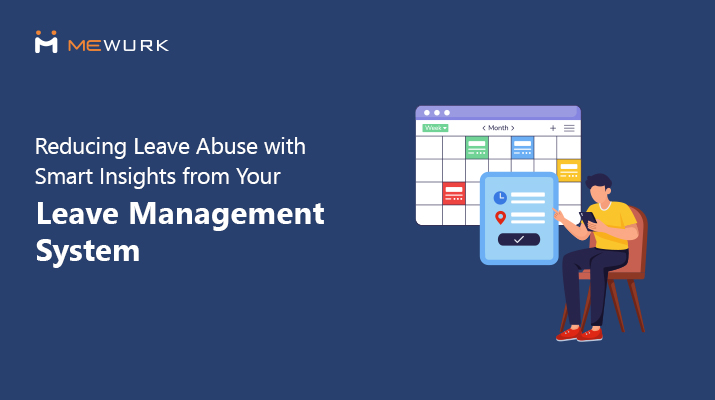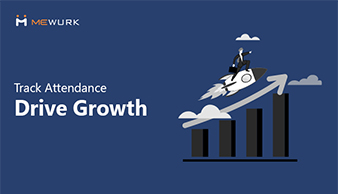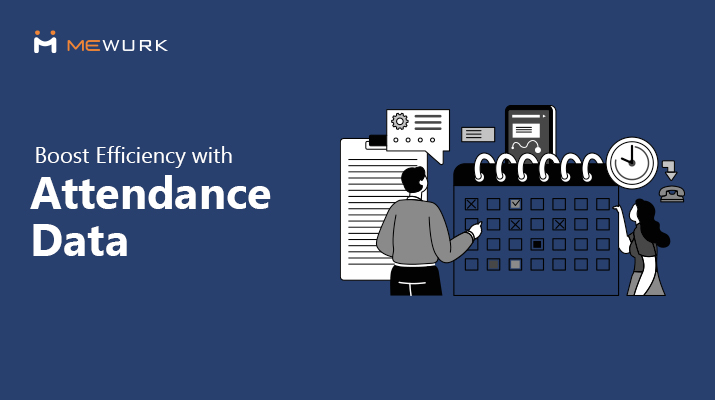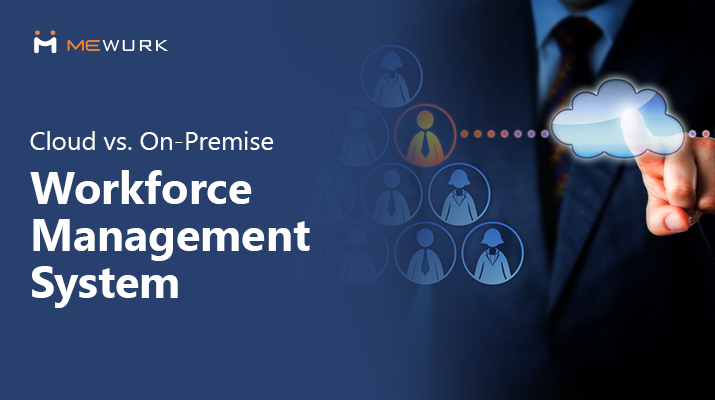
Reducing Leave Abuse with Smart Insights from Your Leave Management System
Ever wondered why Monday mornings feel quieter than usual at the office?
You're not seeing things—it's true. Studies show that absenteeism spikes by up to 20% on Mondays, often due to employees tacking extra days onto their weekends. Although not a big issue, this subtle pattern is one of the several forms of leave abuses. When left unaddressed, this can quietly erode productivity and team morale.
How can businesses balance fairness in leave management with accountability? The answer is a powerful leave management system. This smart technology identifies and prevents leave abuse without fostering distrust. By leveraging it, you gather data-driven insights to spot and stop abuse before it escalates. Let's explore how this enables HR to shift from reactive crisis management to proactive problem-solving.
What is Leave Abuse?

Leave abuse occurs when employees misuse time-off policies, often in ways that are difficult to detect through casual observation. Common examples include:
- Calling in sick on Mondays or Fridays to extend weekends
- Taking sick leave when deadlines approach or during busy periods
- Establishing patterns of absence that align with personal events or holidays
- Excessive use of unplanned leave without medical documentation
- Repeatedly requesting last-minute time off via employee leave management system that disrupts operations
Unlike legitimate absences, leave abuse follows recognisable patterns that data analysis from the leave management system can help identify.
Why Does Leave Abuse Happen?
Leave abuse does not occur in a vacuum. To address the issue effectively, we need to understand the root causes.
Sometimes, it is vague leave policies. Employees could be left wondering, How many sick days are too many? Other times, it's a lack of oversight. When no one is watching and there isn't any leave management software to track the time off, people may be tempted to test the waters.
Inconsistent enforcement of leave policies, employee dissatisfaction, burnout, and the absence of a proper leave management system can create a perception of unfairness, causing people to resort to leave abuses.
How Does Leave Abuse Impact Organisations?
The consequences of unchecked leave abuse can extend far beyond the immediate absence. Here is how it affects the workplace.
- Productivity dips when key team members vanish unexpectedly.
- Projects face delays, and deadlines are missed
- Increased workload for present employees, leading to resentment and burnout
- Administrative challenges in managing unpredictable staffing levels
- Financial losses through paid time that doesn't translate to work output
- Deterioration of team morale when reliable employees notice the leave abuse pattern
The Role of a Leave Management System in Detecting Leave Abuse

An online leave management system is a smart tool to keep tabs on what’s happening with employee leaves at your company. Serving as a virtual HR assistant that’s active 24/7, it brings sharp eyes and smarter solutions to the table for effective enforcement of your company’s leave rules.
Centralised Data Collection
Modern leave management systems log every leave request in real time and will serve as your single source of truth for all absence-related data - dates, types, reasons and more. With this centralised data repository, HR teams can:
- Track employee leave patterns in real-time across the organisation
- Compare current leave usage against historical data
- Identify correlations between leave requests and other organisational events
- Monitor leave usage against established benchmarks
Customizable Leave Policies
Clarity is king when it comes to the implementation of organisational policies. A good employee leave management system will allow you to set and enforce clear rules regarding the capping of sick days and notice for personal leave. Not only that, it also helps with:
- Setting approval workflows to ensure proper oversight
- Defining documentation requirements for different leave types
- Creating department-specific rules to account for operational differences.
With this level of customizable features, a business can guarantee that policies are not just written documents but actively enforced processes.
Automated Alerts & Reporting
The power of technology truly shines through the automated monitoring, alerting, and reporting features in a modern online leave management system. It gets clever at flagging oddities automatically. If there are too many absences for a certain employee in a month, it alerts HR. The smart reporting features allow the generation of customised reports on:
- Suspicious patterns, like frequent Friday absences
- Reports that highlight departments with above-average leave usage
- Automated documentation tracking for extended leaves
Key Insights a Leave Management System Provides
Data is more than just numbers. It tells a story. A leave management system helps you understand and manage that story clearly and effectively through key insights such as:
Attendance Patterns & Trends
A powerful leave management software will let you see multiple types of attendance trends and patterns that might otherwise go unnoticed:
- Frequency distribution of absences across days of the week
- Correlation between leave requests and holidays or special events
- Seasonal variations in unplanned absences
- Patterns of leave requests submitted outside business hours
One manufacturing client discovered that unplanned absences spiked by 40% on days following major sporting events. They identified this pattern through systematic data analysis enabled by their leave management system.
Leave Type Analysis
Different types of leave present different opportunities for abuse. Sick leave often tops the misuse charts—studies peg it as the most abused category, with 30% of claims raising eyebrows. The leave management system breaks down which leaves are overused, and by whom? Additionally, it shows:
- Leave type switching patterns
- Recorded versus actual absences
- Frequent, short time away
Understanding which leave categories are most susceptible to abuse allows for targeted policy adjustments in the leave management system.
Departmental Comparisons
You might notice that some teams, like Sales, are always at work, while others, like IT, seem to have people out a lot. To figure out why, we need to look at how different departments use their time off. Cross-departmental analysis in your employee leave management system could reveal insights on:
- Which departments have higher leave usage
- The correlation between manager styles and team absence rates
- The impact of workplace factors, like remote work, on leave patterns
- How similar roles compare across different teams
Employee Leave History
Zoom in on individuals, and the picture sharpens. Their leave patterns tell their own story:
- Tracking leave distribution throughout the year for each employee
- Identifying recurring patterns in individual leave request timing
- Monitoring changes in leave behaviour after policy updates
- Analysing the relationship between performance reviews and leave requests
This individualised analysis helps distinguish between employees with legitimate needs and those potentially exploiting the online leave management system.
Strategies to Reduce Leave Abuse Using Data Insights

Knowledge is power, but it holds no value until the deal is sealed by action. Here’s how you can turn those powerful data insights from your leave management system into making an actual workplace impact.
Set Clear Leave Policies
Use the data from the leave management system to refine your leave policies and workplace rules that are practical and sustainable. If you notice a lot of people are taking Mondays off, you could ask them to give you a heads-up before taking a personal day on a Monday. And if sick leave is being used a lot, you might need to ask for a doctor's note after a certain number of sick days.
Make sure everyone knows these rules by enforcing them on the online leave management system. Clear policies remove misunderstandings.
Implement Regular Monitoring
Don't wait until things get hectic. Check your leave reports every month to see if there are any patterns, like if one team is taking a lot more time off than usual. Train managers to recognise potential abuse patterns. Likewise, conduct periodic audits of leave documentation and approval processes. The mere knowledge that leave usages are being monitored will reduce casual abuse.
Fair and Transparent Enforcement
Consistency is crucial when addressing potential leave abuse. One financial services company reduced leave abuse by 28% simply by implementing consistent enforcement of existing policies. To achieve this consistency, consider these key steps:
- Apply the same standards across all departments and positions.
- Use progressive disciplinary measures that match the severity of the abuse.
- Document all interventions to ensure defensibility.
- Provide clear feedback to employees about specific concerns.
Rewarding Responsible Leave Usage
Rewards can be just as powerful as penalties. Encouraging positive behaviour helps create a culture of accountability and fairness.
- Recognise teams with healthy attendance rates
- Implement attendance bonuses for employees with exemplary records
- Highlight responsible leave usage in performance reviews
- Create additional flexibility options for employees who demonstrate reliability
Benefits of Using a Leave Management System to Curb Abuse
The advantages of a systematic approach to leave management extend beyond abuse prevention:
- Increased transparency and fairness: When everyone understands the rules and sees them applied consistently, it wipes out any perceptions of favouritism.
- Reduced administrative burden: Automated tracking and reporting free HR from time-consuming manual processes.
- Improved employee accountability: Seeing their leave habits laid out plainly nudges people to think twice before requesting time off.
- Enhanced compliance: Organised records make it easy to stay on the right side of labour laws and regulations.
- Better resource planning: Accurate leave tracking improves workforce planning and scheduling.
Conclusion
Leave abuse isn’t a villain. It’s a symptom. Maybe the rules aren't clear, or people are just tired. A good leave management system shows you what's really going on by turning numbers into useful information. By spotting patterns, enforcing fairness, and rewarding responsibility, it not only reduces leave abuse but also creates a sense of trust.
Looking to reduce leave abuse and streamline leave management? Discover how Mewurk’s advanced leave management system can transform your HR processes today!
Most Popular Post

Why Accurate Attendance and Leave Management Matters for Business Growth?
Read More →Why Accurate Attendance and Leave Management Matters for Business Growth?
How To Leverage Attendance Data For Better Workforce Management?
Read More →How To Leverage Attendance Data For Better Workforce Management?




